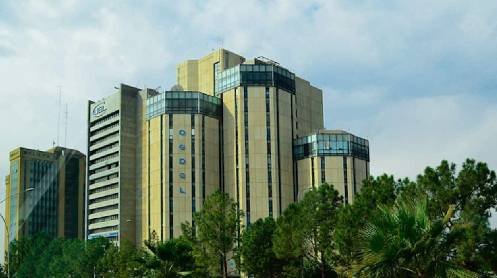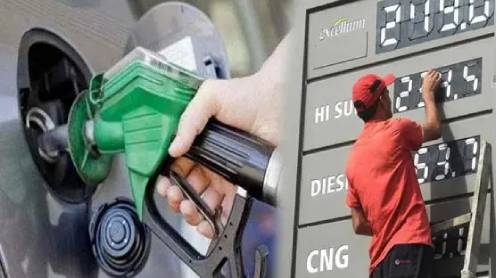Corporate profitability in the third quarter (July-September) was Rs210 billion, signifying a jump of 39 per cent from a year ago. It was the highest quarterly increase in corporate profits in any year. Quarter-on-quarter profitability also recorded stellar growth of 52pc.
For the nine-month period (January-September), aggregate earnings of the companies that make up the KSE-100 index stood at Rs479bn, up 3.9pc from a year ago.
“As the economy gradually transitioned into a recovery phase after the initial Covid-19 outbreak, earnings of companies that comprise KSE-100 index showed a record performance,” said Tahir Abbas, head of research at Arif Habib Ltd. He calculated that the major contribution to corporate profits came from commercial banks, fertiliser and power generation sectors.
Companies are getting healthier and wealthier. Add to that Pakistan’s primary surplus of Rs69bn in July-August against the fiscal deficit of Rs55bn year-on-year. For September, the current account showed a surplus ($73 million) for the third consecutive month for the first time since 2004.
Corporate profitability in the third quarter (July-September) was Rs210 billion, signifying a jump of 39 per cent from a year ago. It was the highest quarterly increase in corporate profits in any year. Quarter-on-quarter profitability also recorded stellar growth of 52pc.
For the nine-month period (January-September), aggregate earnings of the companies that make up the KSE-100 index stood at Rs479bn, up 3.9pc from a year ago.
“As the economy gradually transitioned into a recovery phase after the initial Covid-19 outbreak, earnings of companies that comprise KSE-100 index showed a record performance,” said Tahir Abbas, head of research at Arif Habib Ltd. He calculated that the major contribution to corporate profits came from commercial banks, fertiliser and power generation sectors.
Companies are getting healthier and wealthier. Add to that Pakistan’s primary surplus of Rs69bn in July-August against the fiscal deficit of Rs55bn year-on-year. For September, the current account showed a surplus ($73 million) for the third consecutive month for the first time since 2004.
Foreign Direct Investment (FDI) increased 68.2pc to $189m on a month-on-month basis in September against $112bn in the earlier month. In the July-September quarter, workers’ remittances rose to $7.1bn, showing annual growth of 31.1pc.
Pakistan’s trade deficit stood at $1.74bn in October, down 15pc from last year. Large-scale manufacturing rose 1.2pc in August on an annual basis. Exports edged higher by 2.1pc in during October while oil sales and cement despatches were higher, signifying that the wheels of industry were turning.
All of that paints the picture of an extremely robust economy. But there is scarce jubilation. A professor of economics at a local business school said that for every improvement in the economic indicator, a reason is not difficult to find. “If the fiscal deficit turned into a surplus, it owed itself to the plunge in international oil prices by as much as 50pc.”
After extracting the promise to keep his name anonymous, this wise man whispered that in his opinion Pakistan had been able to avert the disaster caused by Covid-19 as seen in the neighbouring countries and around the world not by some clever idea of smart lockdowns but by the grace of Almighty. He thought the fiscal deficit could turn out to be the biggest challenge in March 2021 when principal and interest would become due. “It will be at that time the government will be scratching the barrel for every dollar,” he said.
One of the major reasons for the general public’s disdain is inflation, especially that of food items. Until that is brought under firm control, the number-crunching game will matter little to the man on the street.
Arif Habib, industrialist and former chairman of the stock exchange, says the economy is moving in the right direction but it is necessary to diligently pursue the path. He said the decrease in interest rates and improvement in demand had provided space for the economy to grow. He attributed the unprecedented growth in corporate profits to the improvement in various sectors such as higher demand for fertiliser, growth in textile exports, improved bottom lines of commercial banks and massive demand for cement for the post-monsoon re-building.
Khurram Schehzad, CEO of advisory firm Alpha Beta Core, observed the economy was limping back to the pre–Covid-19 level. It may remain edgy for the next two quarters after which things would likely settle down. He said growth in the economy was subject to an increase in investment, growth in the manufacturing sector, lower inflation and improvement in consumer spending.
In order to grapple with inflation, prices in the food basket have to be brought down. Mr Schehzad said that corporate profitability has historically displayed average annual growth of 15-20pc over 10-year periods. With consistent growth and industrial performance, it was possible to attain that level on a sustainable basis.
Zulqarnain Khan, executive director of Next Capital, believed the policy of opening up the economy had played out well. It provided Pakistan with an advantage over its neighbours that went into prolonged lockdowns. Foreign exporters who were regular customers of Bangladesh and India found their supplies disrupted, which provided local companies with the opportunity to step in and wrest some of those markets of not just textiles but other goods like medical and surgical instruments.
He said the pandemic had also curtailed some of the unwanted and unnecessary spending. Summer holidays had to be cancelled, restaurants went into prolonged closures and the lockdown of marriage halls gave rise to old-fashioned low-cost marriages. All of that left a lot of disposable income in the hands of consumers.
This was put to a more productive use. In rural areas, farmers thought of repairing houses or purchasing a motorcycle, which gave a fillip to demand for cement and automobiles.
But for all that, economists and analysts were willing to give the government credit where it was due. The government came to the rescue of corporates. It extended incentives to the cement and construction sector. The central bank reduced interest rates during Covid-19 and deferred loan repayments until next year. Last week, the government announced that additional consumption of power by small and medium enterprises would be charged on a reduced tariff.





